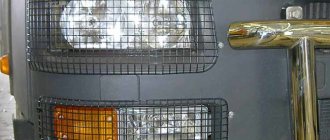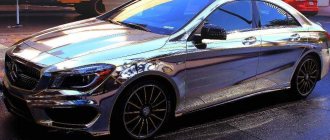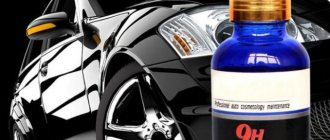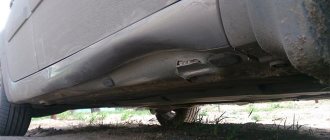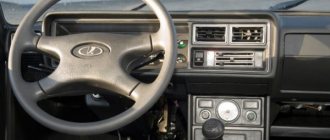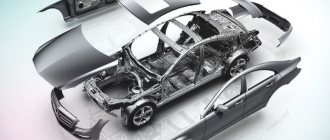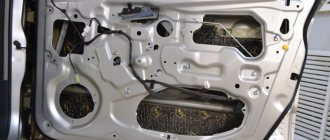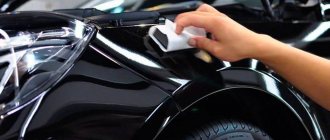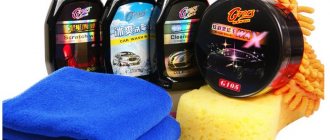Hi all! If a stone or other, even small, object gets into the head optics of the car, it is unlikely to be restored. We'll have to change it. And in some cases it is an expensive pleasure. A protective film on the headlights can come to the rescue.
Many people are thinking about buying it and sticking it on themselves. After all, installation is not difficult at all. This is approximately the same as tinting headlights, since the principle and sequence of actions are similar.
But before the pasting is done, I propose to talk about what materials can be used and how to proceed correctly if you decide to take on the matter yourself.
There are many examples of do-it-yourself pasting with photos and video instructions on the Internet and on resources such as Drive 2. Are there any of our readers who have glued protection to optics themselves? Be sure to leave reviews, share your opinion, and give useful advice to those who are taking on such work for the first time without any experience. I will share my observations and give some recommendations.
Suitable for all types of headlights
Most often, headlights are covered with protective film. According to Denis Zakharevich, director of the AutoBogov detailing center , this service is in greatest demand.
“Headlight wraps are suitable for all cars, regardless of age. The film is applied to any type of headlights and fog lights. Most often you have to work with plastic ones. They scratch easily, quickly fade, and turn yellow. As a result, the light becomes less bright, and the appearance of the car ceases to be attractive.
Prices for pasting headlights start from 30 rubles per piece, if done with materials in the mid-price segment. The cost is primarily affected by the size of the part. Before pasting, “used” headlights must first be sanded or polished and only then the film must be applied. For example, if you have a VW Passat GP with yellowed optics, then polishing will cost 50 rubles for two pieces. The cost of pasting depends on the material and starts from 60 rubles per pair. If you apply American SunTek film, which is used in our studio, the cost of the work will be around 80-100 rubles.
It turns out that “revitalizing” yellowed headlights and their subsequent protection on such a car will cost 150 rubles. This is provided that the optics are treated with expensive American film, which does not become cloudy, does not fade or crack. The manufacturer provides a 5-7 year warranty. Therefore, after the procedure, you will forget about this problem for many years, you will drive with beautiful headlights that shine brightly, and you will be able to pass technical inspection without any problems. By the way, recently there have been more and more cases when a client arrives after he was unable to obtain permission due to severely dim headlights.
Film covering is also suitable for glass headlights. Due to the thickness of 200 microns, it not only protects the glass from damage, but also slightly hides existing chips and scratches,” Denis assures.
Booking headlights in our service
When choosing a service for the requests “booking headlights, price in Moscow” or “booking headlights with film, Moscow”, do not trust the promises of unknown “garages” - suspiciously low prices and not a single finished project in the portfolio should alert you. Usually they employ inexperienced craftsmen who “pull” the film in conditions unsuitable for this - all for the sake of savings and immediate profit, even to the detriment of their reputation.
The space for covering headlights with film must be clean and bright. Additional lighting is often installed in order to notice defects in time. The area where the headlights are pasted must be protected from air from the street, as it contains suspensions of small dust particles. They can get under the film and reduce the effectiveness of the protective coating.
Our service is: an experienced team of craftsmen who have been working with us for many years, a place for pasting equipped with everything necessary, and a guarantee for the work performed. We adhere to deadlines, do not leave scratches, and cover only with the original film without any air bubbles underneath it.
Pay now to save later
As for the body, car enthusiasts most often paste over the front part of the car, sandblasting areas, loading areas and under door handles.
According to Denis, the choice of craftsmen to protect body parts must be taken very seriously. Poorly performed work and cheap materials may not only fail to protect the car, but also harm it. According to the specialist, if the use of inexpensive materials on headlights is not yet so critical and is hardly noticeable at first, then when pasting body parts, the “savings” will quickly make themselves felt.
“Cheap Chinese films fade quite quickly, crack, and when dismantled they often come off along with the paint. It turns out that a person who wants to save money on protecting his car not only does not receive protection and cost savings in the future, but, on the contrary, ends up having to paint the part. In addition, such films have a strong shagreen grain, which negatively affects the appearance. But with professional pasting with high-quality materials, you will hardly be able to notice that something is glued to the surface...
Film is most often used to cover new cars. Some car owners turn to dealers for this service, but this is also not the best option. First of all, speed is important there, so, as a rule, they apply a film cut according to patterns. This means that the edges of the part remain unprotected.
Premium film is as transparent as possible and does not have shagreen. But still, over time, when pasting the element in parts, fading will be noticeable, especially on light colors. Therefore, it is better to either glue the entire element or abandon the idea
The exception is the roof of the car. Completely covering such elements is a waste of money. The roof is not as visible as the hood, and is almost not subject to sandblasting away from the windshield, so we recommend gluing a strip 20-30 centimeters wide to the roof - this will be quite enough. We strongly do not recommend doing partial pasting in other places. If the car owner rarely washes the car, then over time the edges will become dirty and clearly visible.
Another caveat is that unprotected parts will also require additional care. If you do not polish your car once every 1-2 years, you will be faced with the fact that the pasted part of the car will differ from the rest of the car. The film is less scratched, and when strongly heated in the sun, the defects completely disappear. Therefore, the body needs to be polished, it can be treated with ceramics. By the way, it can also be applied to film.
Film care
Reserving headlights with film practically does not impose any restrictions on the operation of the car. The material must “get used” to the headlight - adapt to its shape. Within 7-14 days after pasting, lighting equipment cannot be washed under pressure. After this period, no additional precautions are required. Armored film is a wear-resistant material. Only after 3-5 years during operation does its transparency deteriorate. Microscratches that accumulate on the film all this time gradually turn into a whitish coating. This means that it needs to be changed.
How to remove armor film from a car? If the coating is of high quality, then it comes away from the headlight body without problems - it does not tear and does not leave behind glue. With cheap film, which you decided to save on, not everything is so simple. Such armor is removed in pieces, does not withstand peeling and breaks. After this, an adhesive layer remains on the headlight, which can only be removed with cleaning chemicals.
Choose a service carefully when you decide to armor your car with film for headlights. The price in Moscow for this service is determined by the level of service. There is no need to save on materials, but do not overpay for the qualifications of the master. Always remember about reasonable savings without sacrificing quality. Each of these principles corresponds to our service: an affordable price for work under the supervision of experienced specialists, film from trusted suppliers and a prepared area for gluing.
“Instead of painting the element, they simply changed the film”
If everything is done correctly, the effect will last for the next seven years. Covering your car with armored polyurethane film is a case where you spend now to save later. This, as with anti-corrosion treatment, is an investment in the future.
The protective film will save you from the need to repaint the element due to the large number of chips, scratches and corrosion that can appear at the site of paintwork damage. In addition, the film will save you from painting if you get into a minor accident or if you get used to it somewhere. And also, due to the presence of protection, it is possible to repair some element without painting, because the paintwork itself under the film was not damaged.”
In addition to optics and body parts, protective film is also applied to some exterior parts, for example, to the instrument panel.
Denis is skeptical about self-gluing. In his opinion, an inexperienced person is unlikely to achieve the desired result, but it’s easy to damage your car.
“Firstly, you will have to buy material at retail prices, and secondly, you will still have leftovers that you will have nowhere to put. Thirdly, there is a risk of damaging the film during application. In addition, you need to be able to glue and cut it correctly. It is very easy to damage the paint when cutting the edges. Corrosion will then begin to appear in such places, and all the so-called “protection” will be meaningless. In addition, in addition to the pasting process itself, the preparation process is very important. Only surface preparation takes from 3 to 5 hours. The car is washed, then there is a disassembly process, after which it needs to be washed again, degreased, and treated with primer.”
Recommendations for selection
- We do not recommend choosing cheap film from unverified manufacturers. It quickly loses its elasticity (due to the loss of free plasticizers) and is difficult to remove. We offer only proven films, so you can choose a film right in our office.
- It is better to protect headlights on luxury and premium cars with polyurethane armored film. It is much stronger than vinyl and reliably protects the optics from sandblasting, gravel, crushed stone, scratches, chips and other mechanical damage. Compared to the cost of expensive replacement of cracked headlights, the price of anti-gravel headlight protection is small.
Protecting headlights with ceramics is an alternative method of protection. Protection is several times lower than that of polyurethane film. However, there is a way. A quartz composition based on silicon dioxide will create a thin film. Protects against fading and UV rays. Gives hydrophobic properties and gives a luxurious shine. Durability up to a year. ATTENTION! We recommend covering the film with ceramics. Then you will get the protective anti-gravel properties of the film and the beauty of ceramics.
Our verdict
As it turned out, the procedure, which is simple at first glance, has many nuances, which indicate that to achieve a really good result, it is not enough to order the material on Aliexpress and watch a couple of videos on the Internet.
Saving on quality can lead to dire consequences, so if you have already taken on this kind of protection for your car, it is better to do everything wisely. Protecting headlights is not that expensive, while body wraps are much less affordable. It makes sense to resort to it only in cases where you drive quite a lot and plan to own the car for at least three years.
The editors express gratitude to the Grodno detailing center AutoBogov for their assistance in preparing the material
Service station in the Autobusiness database
How to choose a film
Complete headlight protection is provided using anti-gravel film. Depending on the case material - glass or plastic - a polyurethane or vinyl model is selected.
Anti-gravel film 3m can serve to protect the paintwork of the body. The coating will provide maximum protection from:
- scratches, small cracks from road debris, distributing the impact over the entire surface and not locally;
- dirt, dust thanks to the slippery top layer;
- traces of insects, rain, etc.
There are two types of films on the market: polyurethane and vinyl. The choice depends on the shape, design and material of the case. For plastic parts, choose a vinyl version with a thickness of up to 0.1 mm. If the optics body is glass, use polyurethane material up to 2 mm thick.
If the optics have a ribbed outer surface and are made of plastic, only polyurethane armor of minimal thickness is used.
Technology for self-installation of armor on headlights
To make a reservation, you need to prepare the following materials and tools:
- Film for pasting.
- Detergent.
- Industrial hair dryer. Instead, you can use a regular household one.
- A construction or stationery knife with replaceable blades.
- Scissors.
- Dry, clean rags.
- Rubber spatula.
- Surface degreasing agent. Typically, alcohol is used.
When everything is assembled and prepared, you can begin installing the armor on the headlights. The sequence of work is as follows:
- If it is possible to remove the headlights, then it is better to do so. If dismantling is difficult, you can carry out all the work on the machine.
- Wash the optics thoroughly using detergent and a cloth. Wipe dry.
- Cut out the blank from the film. It should protrude 1.5–2 cm beyond the edge of the headlight.
- Place the workpiece on the glass. Lightly heat the film with a hairdryer, it will take the shape of a headlight.
Initial film application process
- Degrease the surface with alcohol.
- Vinyl film has two layers. The first is the film itself, and the second is the protective layer. Separate the protective layer by 3-4 centimeters and glue the film onto the surface of the headlight. Lightly heat with a hairdryer and smooth with a rubber spatula.
- Gradually, in strips of 3–4 cm, seal the headlight to the end. It is necessary to ensure that there are no air bubbles under the film. If there are any, remove them with a spatula.
- Trim the film around the perimeter, leaving 3–5 millimeters. Using a hair dryer, fold the edge. Remove excess vinyl with a knife.
- Reinstall the headlight if it was removed.
As you can see, the process of booking optics is simple, but it requires accuracy and cannot be rushed.
Do-it-yourself film covering of headlights
To do the pasting yourself, you need to have a certain set of tools:
- paper knife;
- rubber or plastic squeegee with felt (felt) coating;
- spray;
- solution: liquid soap with water;
- hair dryer, which is usually used by builders;
- degreaser (window cleaner or alcohol are excellent, you can use white spirit);
- clean and dry rags.
Before starting work on covering headlights with anti-gravel film, it is necessary to decide exactly how the process will take place. For example, will the entire surface of the optics be covered or will only the “eyelashes” on the headlights be treated? You can also select several color options for the film and create an application combination.
Smoothing the headlight surface
After gluing the film, you need to warm it up completely again. This will make the final connection to the headlight. These steps can be considered final when booking.
Important point! Having completed the booking procedure, it is better not to hit the road in such a car for a couple of weeks if the weather is rainy outside. The same goes for washing your car. It is advisable to wait some time, allowing the film to stick securely. Depending on the operating characteristics of the vehicle, the protective film retains its quality for up to five years.
About the film
Protective film for headlights is often used as tinting. The best way for a car is factory tinting, which has a light transmittance of 95% or more. In industry it is applied by spraying. This allows for certification. Such minor tinting will not cause a fine. When applying film to headlights yourself, it is necessary to take into account the coefficient at which permissible standards will not be violated. Without fear, you can stick on a protective coating with the ability to transmit a light beam of at least 85%.
Armoring headlights is the best way to protect lighting devices from damage
For modern car enthusiasts, a car has ceased to be solely a means of transportation, because now it is a great way to emphasize one’s status, wealth and, of course, a unique sense of style. Therefore, having bought a new car, you need to take care in advance to preserve the original appearance of the car, since the road is full of unpleasant surprises and not only the body and glass, but also the headlights of the car are at risk. Chips, abrasions and scratches affect the appearance of the car and also impair the scattering of light, which can lead to accidents. If you want to protect your iron friend from unforeseen situations, improve its performance properties and maintain its original appearance, then welcome to VipTon, where a team of highly qualified specialists will help protect the optics so that in the future you will save a significant amount of money on replacing expensive parts.
